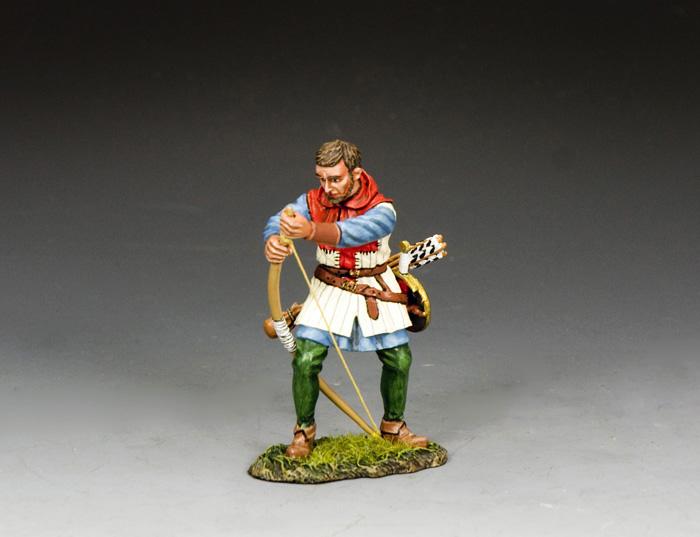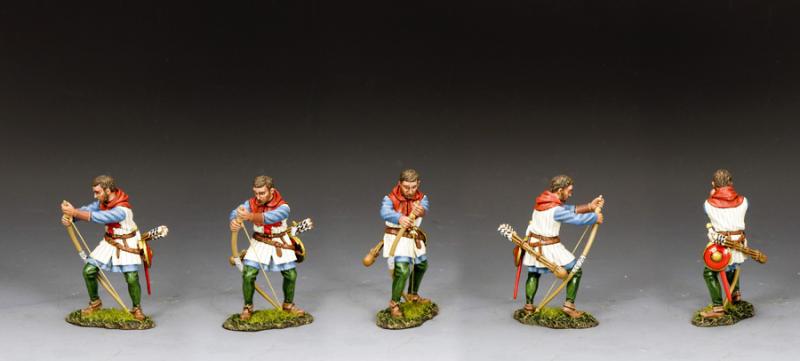"English Archer Stringing His Longbow"--single standing figure (blue tunic)
$49.00
Item Number: MK236
"English Archer Stringing His Longbow"
Traditionally English 'Longbows' were made from the 'Yew' tree, because of its high compressive strength, light weight and... elasticity.
In the Middle Ages, the vast majority of English archers preferred using a string made up of linen and hemp, which they would 'string' their bow with just before the battle.
Our archer is stressing his Longbow between his right leg and left inside foot as he completes the task of 'stringing' his bow.
‘Medieval Archery’
Although archery was probably developed in Africa by the late Stone Age it took a long time to be introduced into Europe and an even longer time to be a central part of waging war on the continent.
By the start of the early medieval period, Shortbows were used for both hunting and warfare. With a range of about 100 yards, a shortbow had the ability to kill or injure an unarmoured man at close range but was often ineffective against armour. Vikings, however, made extensive use of shortbows both at sea and on land.
By the time of the Battle of Hastings in 1066, both armies used archers and a Norman bowman was said to have struck down the Saxon King Harold.
Archers remained active on virtually all battlefields in early Middle Age Europe and were usually unarmoured except for some who had metal helmets. In addition, most were peasants or townsmen rather than knights or men-at-arms.
Beginning in the late 12th Century and into the 13th Century, the ‘Longbow’ finally began to appear in the hands of more and more peasants or ‘yeomen’. This new development had a much longer range and greater penetration power than earlier ‘Shortbows’ and required considerably more skill and strength.
Its lack of accuracy at longer ranges meant that its best use on the battlefield was as a weapon of mass destruction, where hundreds of arrows would descend from above onto the packed ranks of standing foot soldiers or the long lines of advancing cavalry.
Nowhere was that success better shown than the two victories of the English at Crecy in 1346 and Agincourt in 1415.
Released in AUGUST 2024.

